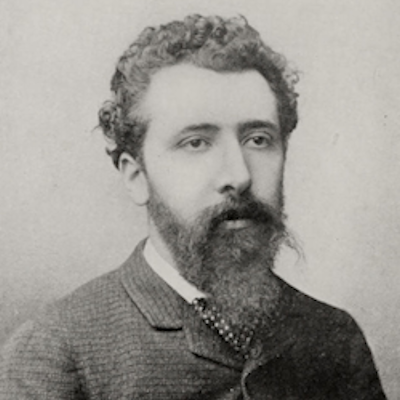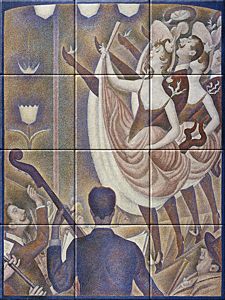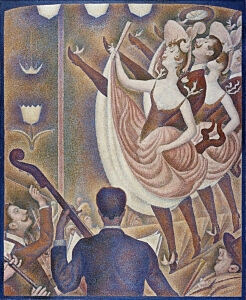We use cookies to make your experience better. To comply with the new e-Privacy directive, we need to ask for your consent to set the cookies. Learn more.

Georges Seurat
Shop now
Georges Seurat studied at the École des Beaux Arts in 1878 and 1879. His teacher was a follower of Jean Auguste Dominique Ingres. The young Seurat was strongly influenced by Rembrandt and Francisco Goya.
He left the École des Beaux-Arts in 1879 to enter military service in Brest. There he drew scenes from the beaches and the sea.After a year he returned to Paris and studied with Lehmann. However, his style was unconventional and soon he left school.
At the time, Seurat shared a studio with Edmond-François Aman-Jean. Some of his works use the banks of the Seine as a backdrop, on the island of La Grande Jatte, a two-kilometer-long, narrow island in the Seine, in Neuilly-Sur-Seine, a suburb of Paris.
Together with Paul Signac, he focused on the theoretical foundations of the colour effect. His technique of depicting light using small brushstrokes with contrasting colours became known as divisionism.A less correct name is Pointilism, because it refers more to the technique of application.
He first tested his theory that the small dots, viewed from a distance, mix in the eye of the spectator in the large canvas La baignade à Asnières (1883-1884; National Gallery, London), with the colors themselves still mixed goods.
Besides a number of large pieces, Seurat mainly painted landscapes, some genre pieces and portraits. Its design is balanced, sleek and geometric in construction.
Not only technically but also in terms of atmosphere, Seurat's style differs from Impressionism, partly because he soon stopped paying attention to natural light, but produced most of his major works in his studio.
In his later large-format work he concentrated mainly on depicting movement, for example in Le chahut (1889-1890; Kröller-Müller Museum in Otterlo) and Le cirque (1891; unfinished; Musée D'Orsay in Paris).


